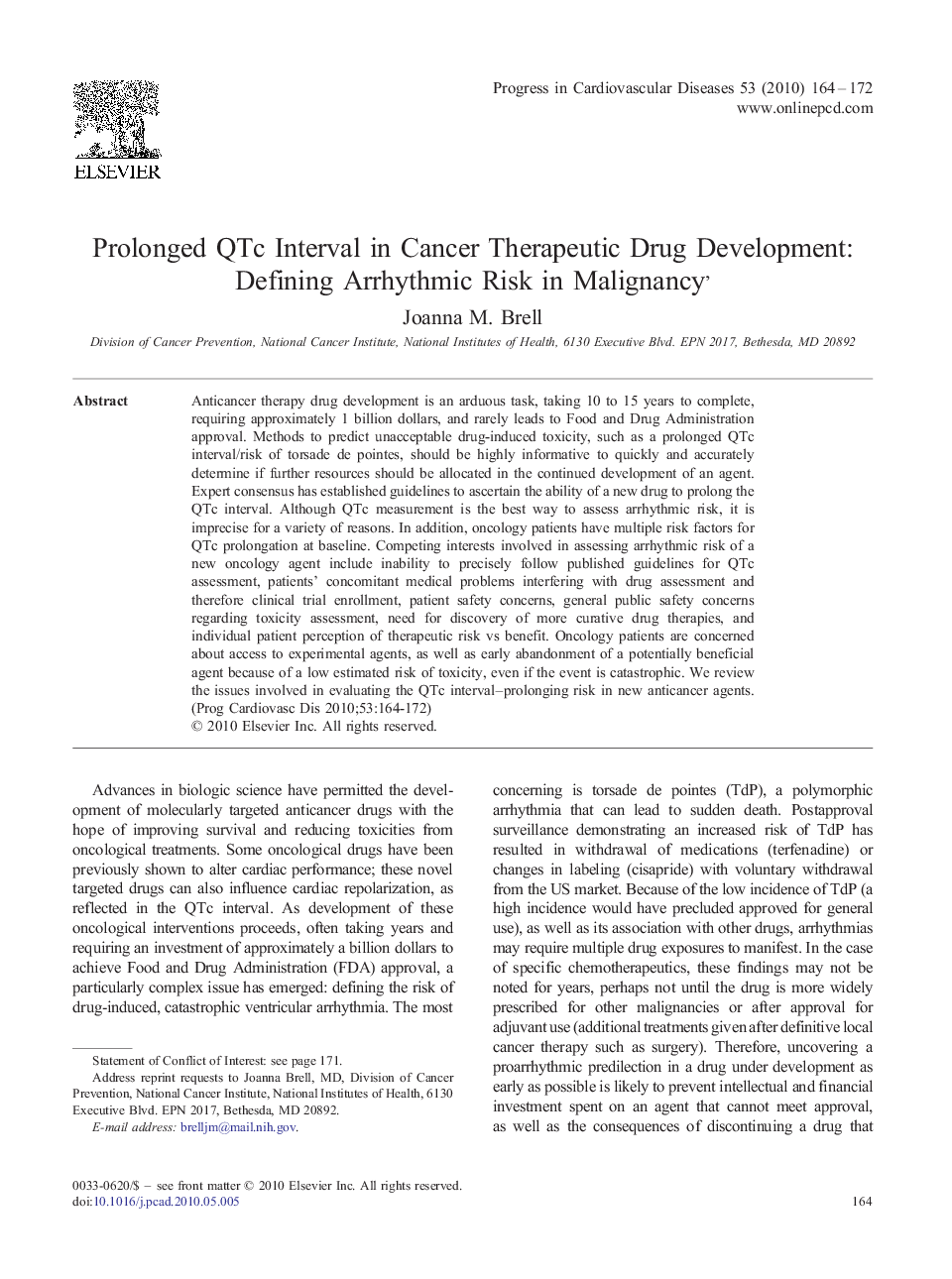| کد مقاله | کد نشریه | سال انتشار | مقاله انگلیسی | نسخه تمام متن |
|---|---|---|---|---|
| 3006905 | 1181016 | 2010 | 9 صفحه PDF | دانلود رایگان |

Anticancer therapy drug development is an arduous task, taking 10 to 15 years to complete, requiring approximately 1 billion dollars, and rarely leads to Food and Drug Administration approval. Methods to predict unacceptable drug-induced toxicity, such as a prolonged QTc interval/risk of torsade de pointes, should be highly informative to quickly and accurately determine if further resources should be allocated in the continued development of an agent. Expert consensus has established guidelines to ascertain the ability of a new drug to prolong the QTc interval. Although QTc measurement is the best way to assess arrhythmic risk, it is imprecise for a variety of reasons. In addition, oncology patients have multiple risk factors for QTc prolongation at baseline. Competing interests involved in assessing arrhythmic risk of a new oncology agent include inability to precisely follow published guidelines for QTc assessment, patients' concomitant medical problems interfering with drug assessment and therefore clinical trial enrollment, patient safety concerns, general public safety concerns regarding toxicity assessment, need for discovery of more curative drug therapies, and individual patient perception of therapeutic risk vs benefit. Oncology patients are concerned about access to experimental agents, as well as early abandonment of a potentially beneficial agent because of a low estimated risk of toxicity, even if the event is catastrophic. We review the issues involved in evaluating the QTc interval–prolonging risk in new anticancer agents.
Journal: Progress in Cardiovascular Diseases - Volume 53, Issue 2, September–October 2010, Pages 164–172